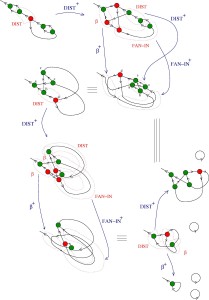Building from Bitzer’s (1992) idea of constraints when it comes to rhetorical situations and Foucault’s (2012) discursive constellation, it’s hard not to think of Miller’s (1984) articulation of genres as arising out of social actions as an attempt to, again, circumspect contextual production artifacts. However, while Bitzer (1992) and Foucault’s (2012) attempt to contain discontinues and rhetorical situations through structural rules, Miller (1984) provides the ability to open up the production rules that generate genres as “organized around situated actions” (p. 154). Moving against Bitzer (1992), Miller (1984) states that “Exigence must be seen neither as a cause of rhetorical action nor as intention, but a social move” (p. 157). Biesecker (1989) in explaining the same issues, writes that “rhetorical situation as an exchange of influence defines the text as an object that médiates between subjects (speaker and audience) whose identity is constituted in a terrain différent from and external to the particular rhetorical situation” (p. 110). Yet, Miller (1994) highlights the opening rejected by Foucault’s (2012) rules and, in a way Biesecker (1989) as well: “In a paradoxical way, a rhetorical community includes the ‘other'” (p. 74). Within Miller’s (1984;1994) model, the discontinuity is within the open set that includes all inclusive and exclusive events that move toward genre congealment.
Miller (1994) closes “Rhetorical Community: The Cultural Basis of Genre” with the admission that genres work as much on its users as they help mold its own uses, identifying them as “the relationships we carry around in our heads” (p. 75). Such a forwarding matches with the same explanations made by Bazerman (2003) in “Speech Acts, Genres, and Activity Systems: How Texts Organize Activity and People” where the the idea of a “genre set” is “texts someone in a particular role is likely to produce,” a “genre system” is “several genre sets of people working together in an organized way, plus the patterned relations in the production, flow, and use of these documents” (p. 318), and that systems of genres are actually “systems of activities” (p. 319). The social dimension of genres, then, is key to both their maintenance and the collisions with other sets in which they are produced through the intersectionality of the agents, actions, and interrelations within itself.

A genre network could be thought of as the relationships between the actors, events, and even outside, overlapping networks that provide “power” (within the metaphor of continued maintenance) and support to its structure. Within Popham’s (2005) “Forms as Boundary Genres in Medicine, Science, and Business”, such a framing seems possible as the use of forms between disciplines is presented as boundary objects that “mediate the central tensions between diverse fields to achieve coherence” (p. 285). As Popham’s (2005) writes:
Thus, boundary genres—that is, genres functioning as boundary objects—may actively participate in interprofessional struggles about hierarchies, dominance, and values, helping to create, mediate, and store tensions. (p. 285)
Such a positioning allows, as Popham (2005) concludes, that following the “the genre system as boundary objects allows us to see . . . how [professions] constrain, limit, and expand one another” (p. 286). In much the same way, then, a genre is not some static idea or collection, but a living constellation of interactions that pass between different professions and disciplines, infecting them as it moves and highlighting the way in which genes translate and encode the techne from one to another and back again.
Or, you know, you could think of it as bacteria.

